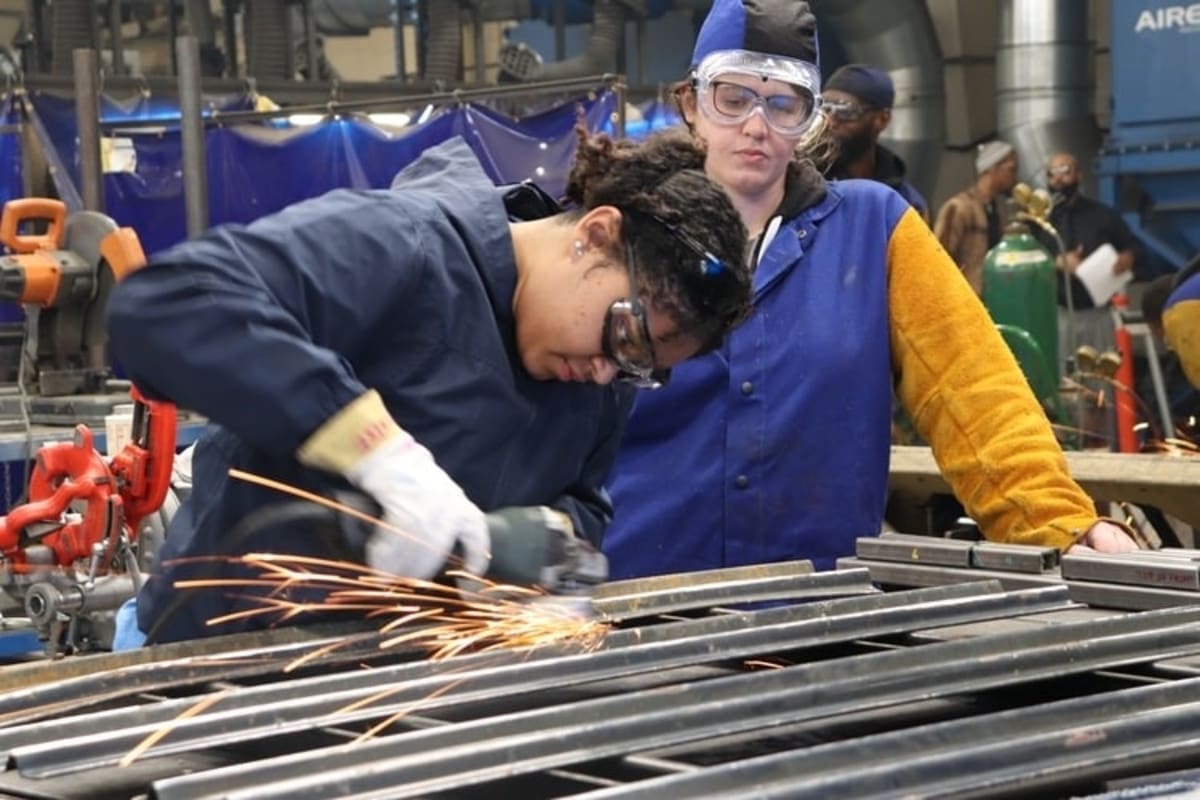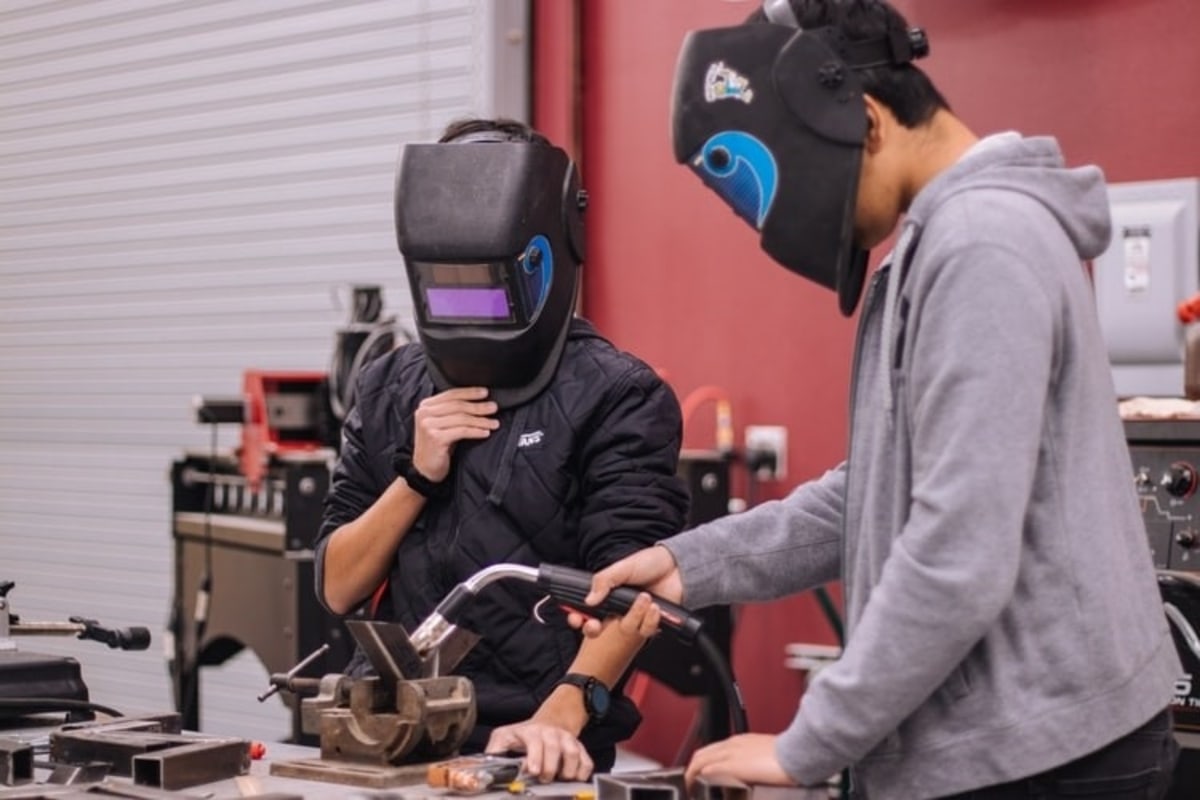All parents want to make the best choices for their children. Schooling is no exception. Which school is the best school? Is public school or private school the best option? Is home school a better option? By the time kids are into high school, the decision seems so much weightier because it is a decision that will affect more than the next four years of your child’s life. High school leads to college or a job. The decision will essentially have an effect on the rest of their life.
For some, traditional high school is not the best option. This situation can make deciding on high school harder because most people have limited knowledge about what alternatives for high school are out there. Most people know about charter schools and private high schools, but those are still pretty traditional choices. If you know that the traditional high school option is not for your teenager, or even if you just suspect this is the case, here are four alternatives for high school to consider.
4 Non-Traditional Alternatives for High School
Magnet and Specialized High Schools
If you live in a bigger city, you are probably familiar with magnet schools. Magnet and specialized schools are not offered in every school district, but they are great alternatives for high school. Not much different than a traditional high school, magnet high schools are public schools that enhance the required core curriculum with a school-wide theme or focus area. These themes – like science, technology, engineering, and mathematics (STEM); fine and performing arts; International Baccalaureate; international studies; and language immersion – act as a “magnet” to attract families.

Magnet high schools, or specialized high schools as they are called in some areas, typically offer more electives for students to choose from. Those electives mostly relate to the school’s theme or focus area. So a fine and performing arts magnet high school would have tons of arts-related electives. There would be art classes focusing on different types of art, theater and acting classes, different band offerings, various chorus classes, and dance classes focusing on different styles of dance. Similarly, at a STEM school there would be dozens of math, science, and technology electives.
Because kids are drawn from all over the district, magnet schools provide the benefit of having a diverse student body, so your children end up getting to take classes on topics they are interested in while going to school with kids from all across the city rather than just kids from your surrounding neighborhoods.
While still a public school option, magnet and specialized high schools are nice alternatives for high school if your child is very interested in a specific area of study. Similar to college when you get to pick classes related to your major, magnet high schools allow students to take more classes they are interested in rather than being stuck with just core classes that may not interest them.
Vocational-Technical Programs
Vocational-technical programs are another option offered through many public high school systems. These are special programs designed for students who show a strong interest in studying a skilled trade. Students spend a large part of the day in vocational or technical classes in their interest area. Programs vary by area and school, of course, but can include automotive, carpentry, computer programming, cosmetology, health science, culinary arts, and veterinary studies.

A good vocational program includes regular academic classes so that students graduate with a standard diploma, giving them the option of going on to a two- or four-year college if they would like.
States differ in how they offer vocational-technical education, but there are three standard models that most districts follow. There are self-contained vocational schools that are separate from the traditional high school. This does not mean that students do not take standard core academic classes. It means that all the students in that school are pursuing a vocational-technical education.

The second model operates within a traditional high school, but has a separate wing within the school for vocational programs since most vocational classes require specialty equipment and space. The third standard vocational program model has students attend traditional high school in the morning and then travel to a technology and career center for the remainder of the day to take their vocational classes.
Vocational-technical programs are great alternatives for high school students who want to gain hands-on experience in a vocation that they are interested in entering after high school rather than pursuing a college degree.
Online High School Programs
If your child has had problems sitting in a classroom because of a learning or other disability, a medical issue, because of their gender or sexual identity, or due to severe anxiety or other mental health challenges, one of the best alternatives for high school may be taking high school classes online.
One of the great things about this option is that it offers a lot of flexibility. Online high school lets students take classes at their own pace and offers all the credits needed for graduation, including core classes and electives. Students can always complete their entire high school education and graduate from an online high school program, or they can decide to return to a traditional high school setting to finish out high school.

Most online options are free to families and are accredited, but it is important to do your homework before enrolling your teenager in an online high school program to be sure you have access to a quality program. Some districts work with online programs that align with the school systems graduations requirements, which is the best option when students may want to transfer back into a traditional high school setting.
This is not the best option for everyone. For students who are not self-motivated and who have a hard time working on their own, online options would not be the best alternatives for high school. It also removes the social aspect of high school, which is important for students. You know your child best, but these are things to make sure you consider when looking at alternatives for high school.
Reduced-credit Diplomas
For some students, it may be difficult to meet the requirements necessary to receive a traditional high school diploma. A number of states offer an alternative high school diploma option that satisfies federal requirements, but that involves lesser credit hours.
The traditional high school diploma track requires 24 credit hours, including core academic classes like English, math, science, social studies, fine arts, and a physical education course and eight elective credits. Foreign language credits are generally not required, but are recommended for students planning to attend college after graduation (and often required by many universities).

In contrast, reduced-credit programs offer an accelerated graduation track. In states where the 18-credit diploma is offered, students take fewer electives and focus on academic core classes. Completing fewer credits, means students typically graduate in three years instead of four. This option is only offered in a handful of states.
In some of those states, such as Florida, there are two programs within the reduced credit track: a college preparatory program and a career preparatory program. In the college preparatory program, students are required to earn two credits in a foreign language, complete high-level math courses, and earn at least six of the 18 required credits in specific courses, while maintaining a certain grade point average. The career preparatory program requires students to earn specific credits in a single vocational or career education program, while maintaining a certain grade point average. The requirements of the career prep program are designed to prepare students to enter a technical center, community college for career preparation, or to enter directly into the workforce.
Many principals see this accelerated reduced-credit program as a bad idea. It moves students out of school quicker, but reduces a student’s high-school education by 25% – they miss out on electives and extra-curricular opportunities. It is also feared that it can hurt a student’s chances of getting into one of the more competitive colleges. However, for some students who need alternatives for high school, this option may be their best option. It is an option to consider, but it should be considered with caution and with full awareness of what it involves.
Non-traditional alternatives for high school may be best when your child has struggled in a traditional school setting. These options are obviously not exhaustive – homeschool, charter high schools, and private high schools are all additional options, but they are discussed so frequently they are not covered here. Know that the right option for your child is out there, whether or not it looks like the traditional high school experience.
WANT TO READ MORE?
Check out this article on 10 Books Every High Schooler Should Read Before Graduation.

Photo Credits: Unsplash.com
Sources: Vocational Education in High School: What You Need to Know, High School Graduation Options









































